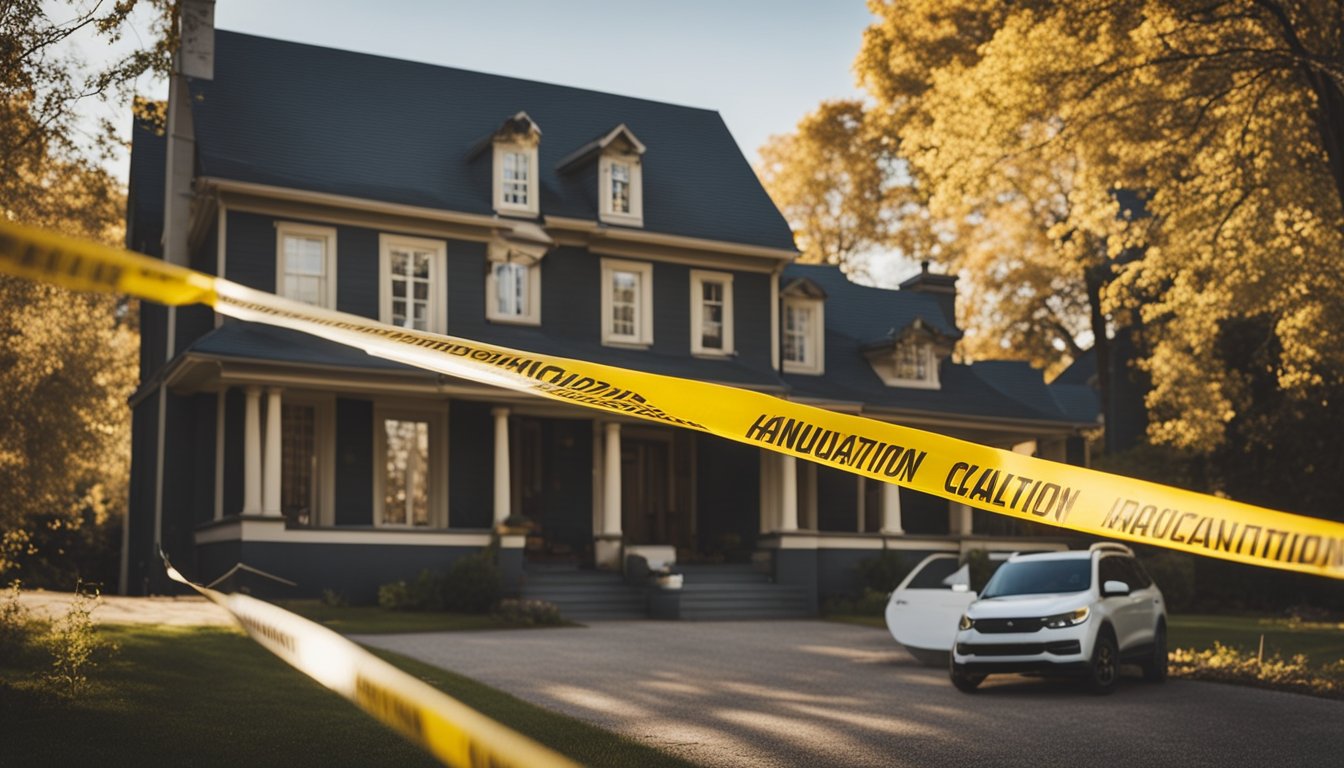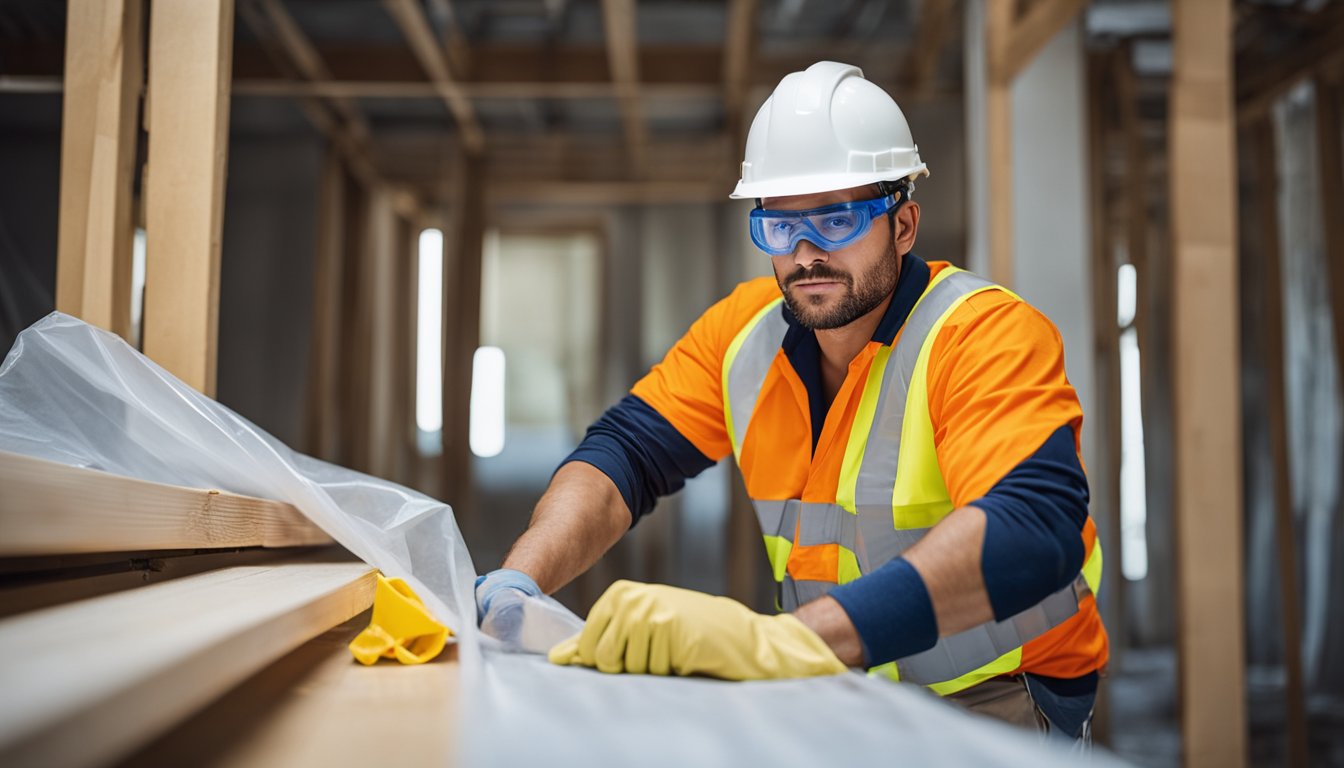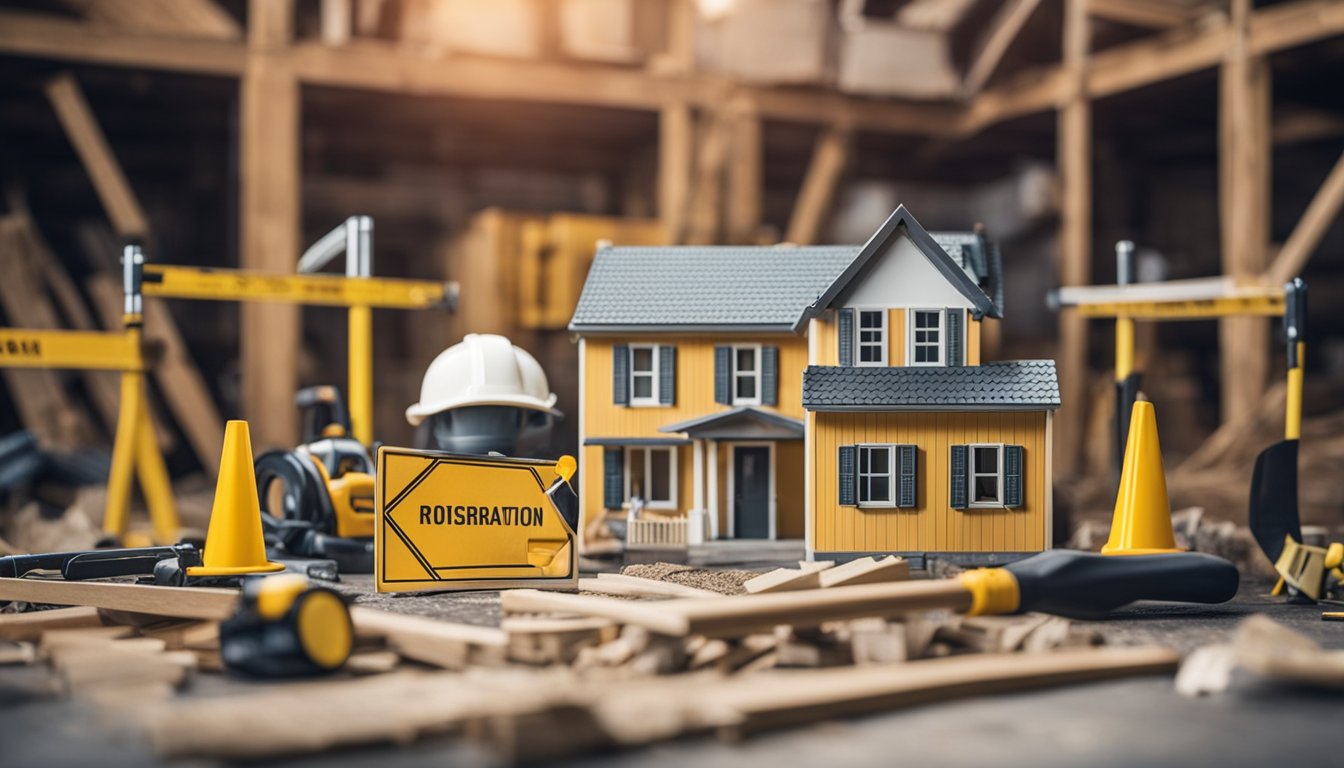Late updated: 01 Jul 2024 08:07
Written by: Daniel Harper
Protecting Your Home From Renovation Hazards: Essential Safety Tips
Renovating your home can be an exciting yet challenging endeavour. As we transform our spaces into the ideal sanctuary, we must remain vigilant about the potential hazards that come with renovation. Protecting your home during a renovation not only ensures a successful project but also safeguards the well-being of your household.

Preparation is key to mitigating risks during a renovation. Before any work begins, it's critical to establish a clear plan, secure necessary tools, and set up protective barriers. These steps will help avoid accidents and damage to your property.
Special attention should be given to managing environmental aspects. Shielding plants and preventing water damage are essential to maintain the exterior of your home. Implementing these precautionary measures will provide peace of mind and help achieve a smooth renovation process.
Key Takeaways
- Proper planning and preparation are critical for a safe renovation.
- Establish protective measures to minimise risks and damage.
- Manage environmental factors to maintain overall property health.
Planning and Preparing for a Renovation
Taking the right steps before a renovation can make all the difference. From understanding potential risks to securing permits and hiring professionals, thorough planning ensures both safety and success.
Understanding Renovation Risks
Renovations come with various hazards. Dust and debris can affect respiratory health. Electrical hazards pose serious risks if not handled properly. We must be aware of structural vulnerabilities that could result in accidents. Identifying these risks early helps us to plan effective safety measures and prevent injuries.
Common Hazards
- Dust and debris
- Electrical shocks
- Structural weaknesses
We should also consider the impact of heavy tools and equipment. By assessing these hazards, we can create a safer work environment. Using protective barriers and personal safety gear is crucial for avoiding accidents.
Hiring the Right Professionals
Choosing experienced professionals is essential. Skilled contractors, electricians, and plumbers reduce the likelihood of errors. We should always check credentials, certifications, and previous work.
A reliable professional team ensures compliance with safety standards. Ensuring that all contractors carry liability insurance and workers’ compensation protects us from potential legal and financial liabilities.
Key Selection Factors
- Credentials and certifications
- Previous project experience
- Insurance coverage
Having qualified professionals helps keep the project on track and within legal boundaries. It also significantly reduces the risks associated with the renovation process.
Securing Permits and Insurance
Permits are legally required for many types of renovations. We need to check with local authorities to understand the necessary permits and submit applications in advance. Failing to secure permits can lead to fines and project delays.
Insurance is equally critical. Homeowners should ensure their property is adequately covered. Contractors must have their insurance, such as liability and workers’ compensation. This not only protects us from accidental damage but also covers potential injuries.
Essential Coverages
- Homeowner’s general liability
- Contractor’s liability
- Workers’ compensation
Verifying insurance documents before starting the renovation safeguards our interests and ensures everyone involved is protected legally and financially.
Designing a Safety Plan
A solid safety plan is the backbone of any renovation project. This involves creating physical barriers to keep dust and debris contained. We must also have clear protocols for handling electrical tools and equipment safely.
Emergency procedures should be established for accidents and injuries. Regular safety briefings for all workers ensure everyone understands their responsibilities. We need to keep the workspace tidy and clearly marked to prevent trips and falls.
Safety Checklist
- Physical barriers
- Proper tool usage
- Emergency procedures
By implementing these safety measures, we can minimise hazards and ensure a smoother renovation process. Coordination and regular safety checks are key components of an effective safety plan.
Mitigating Specific Risks During Renovation

During a renovation, it's vital to address specific risks to protect your property and ensure the safety of everyone involved. Below, we'll explore how to effectively safeguard against various hazards.
Structural and Property Protection
To prevent damage to your home, begin by covering furniture and flooring with plastic sheeting or drop cloths. This is crucial when painting or sanding, as debris and spills can cause long-lasting harm.
Make sure to install temporary supports if any walls or structures need to be removed or altered. Contractors should erect barriers to protect the living space from dust and debris. Avoid working in severe weather to prevent materials from becoming damaged or causing accidents.
Motion sensors and burglar alarms should be functional, especially if contractors are entering and leaving the property frequently. Installing outdoor lighting can also deter trespassers during the renovation period.
Ensuring Personal Safety
Personal safety should be a top priority. When performing electrical work, always ensure the power is turned off at the circuit breaker to prevent electrocution. Wearing a hard hat, safety glasses, and using a first aid kit for minor injuries can make a significant difference.
Set up clear, designated work areas to limit accidents and keep non-essential personnel away from high-risk zones. Proper use of ladders is essential, so ensure they are stable and not overloaded.
For contractors, proper protective gear is mandatory to avoid injuries and ensure a safe working environment. Regular job site safety meetings can help everyone stay aware of the risks.
Electrical and Fire Safety
Electrical safety is paramount during renovations. Outlets should be protected with GFCI receptacles to prevent shocks. Verify that all electrical wiring and installation meet current safety standards.
Keep fire extinguishers accessible in areas where flammable materials are being used. Fire alarms should be tested to ensure they're working correctly. Double-check gas lines for leaks if the project involves plumbing or heating adjustments.
Ventilation helps control dust and fumes, reducing fire hazards when smoothing services or using power tools. Always have a clear escape plan in case of emergencies, and train everyone involved in its execution.
Chemical and Environmental Safety
Handle lead-based paint, asbestos, and other hazardous materials with extreme care. Use ventilation and air purifiers to maintain air quality. Mitigating lead and asbestos exposure requires sealing the area and disposing of hazardous materials legally and safely.
When painting or sanding, use protective measures to avoid inhalation of toxic chemicals. Carbon monoxide detectors are essential when working with gas-powered tools or if there’s a need for prolonged use of generators indoors.
Mould can develop in areas with poor ventilation, so quickly address any dampness to prevent growth. Always check for carbon monoxide presence if your project includes working with gas lines or heating appliances.
Finalising and Aftercare
Once the renovation project is complete, thoroughly clean the site to remove any lingering dust, debris, and potential hazards. Inspect electrical and fire safety devices like smoke alarms and carbon monoxide detectors to ensure they are functional.
Review structural alterations with a certified professional to confirm everything meets safety standards. Proper aftercare involves regular maintenance checks and addressing any minor issues promptly to avoid future complications.
By taking these critical steps, we protect our home, ensuring a secure and pleasant living space after the renovation project concludes.
Frequently Asked Questions

When renovating, it's vital to protect both your home and health. Here, we address common concerns and provide practical solutions to mitigate risks associated with home refurbishments.
How can I safeguard my home during remodelling works?
Covering exposed surfaces and furnishings with plastic sheeting is essential. It's important to extend the sheeting at least 10 feet from the house to catch debris. Ensure all fragile items are securely packed away. During severe weather, avoid outdoor work that can exacerbate the spread of renovation particles.
What potential health risks may arise from refurbishing my property?
Renovations can expose you to hazardous materials like lead, asbestos, and mould. Lead, commonly found in pre-1978 homes, poses significant health risks, especially to children. Asbestos fibres released into the air can lead to respiratory illnesses. Mould exposure can cause allergic reactions and exacerbate asthma symptoms.
Can exposure to construction dust detrimentally affect health?
Construction dust contains fine particles that can penetrate deep into the respiratory system. Prolonged exposure may lead to respiratory conditions such as bronchitis or exacerbations of asthma. Using protective masks and ensuring proper ventilation can help reduce these health risks.
Is it advisable to remain in the residence amidst renovation activities?
If possible, relocating temporarily during extensive renovations is the safest option. This minimises exposure to dust and hazardous materials. If relocation isn't feasible, isolating the work area with plastic barriers and maintaining stringent cleaning routines can help protect your living spaces.
What preventive measures can be taken against construction-related pollutants?
Utilise high-efficiency particulate air (HEPA) filters to trap airborne particles. Ensure that downspouts direct water away from the house to prevent water damage and mould growth. Regularly clean air ducts and maintain a clean environment to minimise the risk of pollutants.
How could structural alterations impact indoor air quality?
Alterations can disrupt existing buildups of dust and debris, releasing them into the air. This can be mitigated by ensuring that renovation areas are properly sealed off from the rest of the home. Additionally, consistently using air purifiers and maintaining good ventilation can help preserve indoor air quality.
